There is unfulfilled demand for local food in Nevada. This demand can be filled by addressing a series of gaps in knowledge and logistics that prevent a larger scale of production and supply of local food and by educating the market that the products they desire can be grown in the desert. If a farm-to-market system is established, a local food system can be developed into a strong new industry for Nevada.
Introduction
The production of local food in Nevada has great potential to grow into a strong new industry. Local food has different definitions but for the purpose of this special publication, local food is food grown within 200 miles of where it is eaten. There is demand by businesses and consumers for local, fresh food that is not being met by Nevada producers (Cowee et.al, 2009). Most of the food consumed in Nevada is imported from distances greater than 500 miles away. As a result, food is less fresh and the food supply is at risk if transportation is cut off. Research has shown there is the capability to grow the desired food products locally (Gatzke, 2012).
The local food industry is in its infancy but shows promise if developed efficiently. Farmers in the Reno area have been building a local food system utilizing informal networks of producers selling at farmers markets, farm stands and local grocery stores. The industry started about 15 years ago but has flourished in the last seven years. The southern area is just starting to develop small farms that direct market, with the University of Nevada Cooperative Extension (UNCE) “Producer to Chef” program spurring local food production in the last five years.
This special publication outlines key issues that need to be addressed to develop the local food industry. The focus is on steps needed and programs running to develop the local vegetable industry. Some initial barriers to starting a local meat industry are outlined.
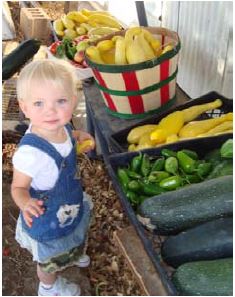
Local food demand not serviced in Nevada
The state of Nevada imports $93.8 million of vegetables and melons and $195 million worth of fruits every year (Harris, 2011). The majority of this food goes to Las Vegas to feed 38.9 million annual visitors (2011) beyond the 1.9 million residents (Las Vegas Convention & Visitors Authority, 2012). If local production could replace 5 percent of the vegetable and melon imports, then a $4.69 million industry can be established. Meats and other processed products could further increase sales by many million more.
Las Vegas consumers and chefs desire and are willing to pay premium prices for fresh, high quality local foods (Cowee et.al, 2009). These markets have developed in the last 10 years with the creation of food excellence restaurants as part of destination casinos and with the rapid population growth. These newcomers do not know that quality local foods can be grown by Nevada farmers.
The number of high-end restaurants has grown dramatically in the last 10 years to the point where Las Vegas is now on the leading lists of food excellence locations (Gayot, 2012). Currently over 98 percent of the product is sourced from all around the United States and world and all of it is trucked or flown in (Cowee et. al., 2009). High-end chefs preferentially use locally grown produce as long as they can get quality products consistently.
Consumer demand and purchases of local food has steadily grown in an increasing number of markets (Cowee et.al, 2009). The Local Food movement has exploded in the Reno area and has a number of Community Supported Agriculture (CSA) programs and farmers’ markets established in the last 15 years. A CSA is a program where consumers purchase a share of the farm produce and then the products are delivered weekly during the growing season. There are over 20 markets in Reno and the surrounding area. More markets are opening across the state. A list of farmers markets in Nevada can be found on the Nevada Grown website, Farmers Markets.
The farmers markets in Las Vegas traditionally sold small amounts of produce originating from California. Markets that provide regular locally grown food have expanded from none to more than five markets in the last five years. The numbers of patrons of locally grown products has steadily grown. Las Vegas has a large population that has moved in (1,196,350 since 1990 (Census, 2010) many from cities where they could buy fresh local products. CSA businesses have started developing to serve this market as well.
The other identified market for local produce is natural food stores such as Whole Foods, Sunflower Market, etc.
Some of the local producers have sold product to Whole Foods. These companies have local foods sections and greatly desire local product supplies. Natural food store prices for locally grown goods are higher and they may pay 50 percent of that to the farmer. These stores do require extensive production and food safety practices and tracking, often beyond those needed for health inspection. The store requirements to purchase products from farms can be found on their websites.
The Local Food movement has grown in the Reno area enough to support its own local food grocery store, Great Basin Community Food Cooperative. This store started in a small back room and has now the clientele to move to a full-sized store that sells local produce and meat.
Industry Analysis
Local food is a strong trend in agriculture. Even the federal government is now on board with its overarching program – “Know Your Farmer Know Your Food.” Consumers have recognized that food grown locally is fresher, tastes better and in some cases is healthier. There may be a concern that local food costs more to produce, especially in the desert; therefore it is only for the wealthy.
Although the dominant market is people with higher incomes, research indicates that people from all incomes are willing to spend more on good quality food (Cowee et.al, 2009). We have seen this in Lincoln County, Nev. farmers markets where consumers with lower incomes are purchasing the food.
Consumers view local food as safer because they know the farmer and how the food was produced. Local food is fresher and consumers buy the amounts they want with less waste. Farmers market consumers have indicated their food bills have not increased because their families are satisfied while consuming a smaller amount of healthy local food allowing them to buy less total food (personal correspondence). Recent studies have shown healthy food can be cheaper than junk food (Carlson & Frazão, 2012). An obese and yet nutrient deficient U.S. population could benefit from less total food and more healthy food.
The sale of food locally can provide economic benefits due to the positive 1.45 to 1.58 multiplier effect on both income and the number of jobs (Economic Research Service, 2010). This means that when local food is sold, the value of that sale builds local income and jobs by the multiplier amount with the spending of the money over and over in that region. With the growing consumer response to local food and economy benefit, interest in local food likely will further increase.
From an ecological viewpoint, intensive small farm vegetable production in most cases use less water than alfalfa and hay crops, most of which are shipped away large distances. Unfortunately, Nevada water regulations are a “use it or lose it” system, so producers can be penalized if they do not use all of their water rather than being rewarded for conservation.
In rural Nevada there is a great need for jobs and business development. Yet many rural communities do not accept change or welcome new industries. The response to locally grown food has been favorable because it is founded in agriculture tradition. Local food is a business that can quietly grow with support from locals. Rural Nevada business professionals have commented that the local food industry is one of the first business development concepts that appears feasible for their rural areas and has potential to create positive long-term impact.
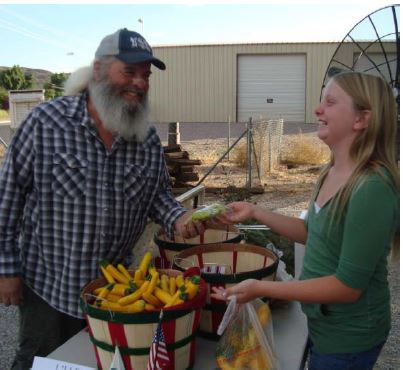
Nevada has the potential market of residents (1.9 million) desiring local food. The customers of those markets must be educated that quality food can be grown in the desert. The demand can be satisfied with the production of quality products from Nevada if farms are convinced to diversify from their traditional farming systems to service the demand. Local food is relatively new in Nevada and so the industry gaps need to be identified and addressed at all levels.
Studies show that the greatest barriers in local food industries across the nation are capacity constraints for small farms and lack of distribution systems for moving the food into markets; limited research, education and training for marketing local food; and uncertainties related to regulations for local food production such as food safety requirements (Martinez et.al, 2010). These barriers are found for the current local food industry, which dominantly occurs in urban corridors of the Northeast and the West Coast (2007 U.S. Census of Agriculture). Nevada will have the above barriers since the farms are small (2007 U.S. Census of Agriculture); there are no distribution systems; direct marketing is new to most farmers; and the regulations in Nevada are not developed or clear for small food systems. As well, Nevada has its own environmental challenges. Nevada’s growing areas are widely dispersed in valleys away from the urban centers. The desert environment creates extreme temperature ranges that can challenge growers during production and post harvest care.
Gaps in Local Food Demand
Since there is strong desire for local food in Nevada, the gap on the demand side is educating consumers (chefs and individuals) that high quality food can be produced in Nevada’s desert and could be available for purchase. The UNCE program, “Producer to Chef,” has started educating Nevada chefs and consumers that quality food can be grown in Nevada using the following activities:
- chefs were taken to farmers’ fields
- locally grown food was evaluated by chefs
- a farmers market was started for local food (Bet on the Farm)
- farmers markets were helped to start and expand their local food areas
- local food events were supported
- farmers were educated on producing high quality food for local sales
The education is having an impact as demonstrated by increased requests for local produce from high-end chefs, farmers markets, CSA businesses, and specialty grocery stores (Whole Foods). Doug Taylor, UNCE “Producer to Chef” educator, has introduced more than 100 Las Vegas chefs to local farmers and their products. Of those chefs, 40 are now supporting local farming on a weekly basis.
Educating chefs that quality produce can be grown in Nevada has resulted in an increase in farms growing and restaurants using local foods. As more locally grown products have become available this market is expanding.
There is more work required in educating the consumers on local food production and availability in Nevada. The UNCE “Herds and Harvest” program (Herds & Harvest Program) has plans for a marketing campaign to consumers on local food. A full marketing campaign of local food in Nevada is required to further build demand and connect consumers to producers.
Gaps in Local Food Supply
There is a series of gaps that need to be addressed to develop a supply of locally grown products in Nevada. These gaps appear in production, postharvest handling, marketing, sales and delivery of quality products.
Local food production is a different business for Nevada farmers. The farming is more intense because of greater labor requirements, production in a smaller area and the requirement for consistently exceptional quality. The farming is more complex because farmers need to market, distribute and sell their products directly to consumers. The diagram below shows development steps required for establishing a supply system:
FARM TO MARKET SYSTEM
*Chart here
Agriculture Diversification
The majority of farms and ranches in Nevada produce alfalfa hay and calves that are shipped out of the state (Harris, 2011). To develop a local food system, these farms must see value in changing their production systems to growing products for local sales. The current hay farming systems are low labor and very different from vegetable or fruit production. The food production systems will require a change in irrigation and farming equipment. Different production techniques that include intensive daily care and hand picking will need to be implemented. Ranchers currently ship their calves to be finished outside of Nevada in large feedlot systems and they would have to find the feed and infrastructure to feed, finish and slaughter in Nevada.
The first step is introducing farmers and ranchers to local food production alternatives. It has been shown that providing examples of how to profitably farm local foods helps get new farming systems adopted. In areas surrounding Reno there have been a number of farmers that have been excellent in providing help to others on how to diversify into local food production. Lattin Farms in Fallon has initiated CSA groups, presented at meetings, and provided tours of the farm.
In Lincoln County, Nev., UNCE faculty conducted a research project from 2007 to 2010 on two farms in differing climates. The research evaluated how landscape trees and vegetables crops production performed in and out of hoop houses (Gatzke, 2012). The landscape trees proved to be too risky to be profitable. The vegetable crops were high enough in quality for high-end chefs. The project included field tours, self-tours and workshops, which provided education on how these crops could be grown for alternative local markets. Crop budgets were developed that showed hoop house vegetable production was viable (Bishop and Gatzke, 2010).
The educational component from this program in Lincoln County resulted in the growth of an industry. The experimental hoop houses were the first constructed in the county in 2007. By 2011, 20 hoop houses were being used for commercial production with an additional 15 being built before the end of 2012 and over 15 more planned for 2013.
There should be continued marketing of the various local food products and how they could be produced across Nevada. With the range from specialty livestock, high quality traditionally raised animals to vegetables and fruits, there is likely a product suited for every farm in Nevada. A model example for the potential is in New Mexico where a strong network of producers, consumers and leaders are developing their own local food supply (Dreaming New Mexico, 2012). This concept has a map of what products can be produced across New Mexico and encourages the development of food hubs to connect farmers’ products to markets.
Once producers develop a passion for producing food for local markets, they will need adequate information to complete a business opportunity assessment. The total cost of production and returns must be estimated for each target product. If new products appear to provide the needed diversification opportunity for profitability, then farmers will have to develop business plans and receive education on production, post-harvest and marketing systems.
Production Gaps
There is need to educate farmers about the several adaptations required to successfully produce high-end products. Most of the production information available for small-scale production of niche products is developed in more humid, cooler or more consistent climates than found in Nevada’s deserts. There is a need to discover production systems that optimize crop development and the timing of harvesting. There must be cost-effective systems established for controlling potential pests.
Most farms growing niche crops for direct marketing are using hoop houses. Hoop houses substantially reduce production risk by extending growing seasons and protecting harvests from the harsh temperature swings and pests of the high desert.
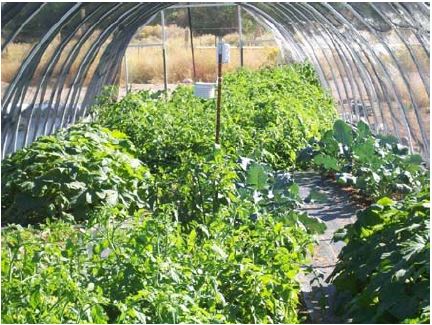
There would have to be research on the economics of finishing animals in Nevada that would fit the specialty products being desired by local food clients. Local meat products would have to be distinctly different and desirable compared to the regular products available that are produced in large, cheaper systems. Questions need to be answered on whether Nevada growers have the capacity and price competitiveness to supply the needed finishing feed for locally finished livestock. There may need to be some adjustment to breeding and feeding to create specialty products with unique, desirable flavor and higher pricing. Research should be done on novelty breeds and animals and feeds that would perform well in the desert environment.
Extensive research and education is required on all of these topics. Universities would need the support and funding to research these areas. UNCE has held a number of workshops to educate producers on animal husbandry, crop production, maximizing crop quality characteristics, irrigation systems suitable for identified crops, handling at harvest, new market opportunities, etc. UNCE has held a “Great Ideas from Growers” monthly meeting across the state during the winter of 2012 to allow an exchange of knowledge between growers. Western Nevada College has held numerous Small Farm workshops and an annual conference for local food producers and educators in Nevada. These educational opportunities must continue and be expanded to provide producers from across the state the support required to expand their business capacity to supply strong market demands.
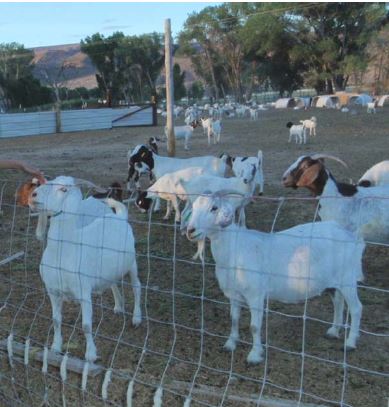
Postharvest Gaps
An effective system for postharvest activities must be designed to ensure products are maintained at the highest quality desired in the markets. There is extensive information on post-harvest mechanisms in common commercial systems. Information on how to handle products for fresh, direct markets are more difficult to obtain because there is much less public research which is proprietary. There are several issues that need to be addressed:
- identifying optimum techniques and procedures for maintaining fresh and flavorful products;
- selecting equipment;
- reducing losses of quality due to heat;
- creating businesses or cooperatives for improved efficiencies;
- and identifying and achieving required certification and labeling.
Some of this information can be acquired from other sources, some by trial and error. Most of these postharvest handling systems still must be adapted for small farms to deal with the hot, dry climate and long distances from rural growing areas to the urban centers in Nevada. There is a new resource designed for other climates that can be used as a starting point (Slama, 2012). A team of experts should be developed to create and implement a statewide plan for local food.
Processing Gaps
The greatest area in need of building processing capability is for meats. Many producers in Nevada are interested in developing local meat sales but the lack of local U.S. Department of Agriculture (USDA) inspected processing plants has greatly limited further development of local meat products at this time. There are no processing facilities that provide USDA inspected slaughter beyond the University of Nevada Wolf Pack Meats in Reno and a small facility in Fallon (USDA, 2010). If Nevada ranches started finishing more animals locally, great shortage of processing would result. Small processing plants for livestock often struggle due to an overabundance of animals being ready for slaughter within a short period and being underutilized the rest of the year.
Federal law indicates that broilers can be processed without continuous USDA oversight in the processing operations. Nevada law overrides this exemption. If a slaughter plant was created, the long distances and extra costs of inspection would create a disadvantage for small poultry growers in Nevada relative to other states.
Nevada meat at “Cuisine in the Country” local food event was slaughtered in a USDA plant in Utah
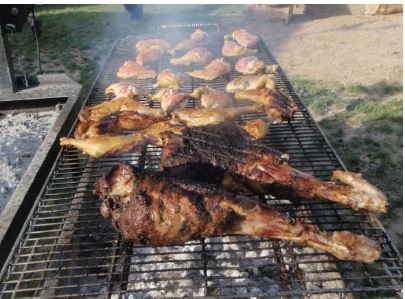
UNCE has provided workshops in the area of local meat. There needs to be a larger and more collaborative effort to address the meat processing gap in Nevada in order to develop a local meats market. Successful small slaughter systems around the nation could be used as models. The USDA Small Plant Help Desk can be an excellent resource for starting safe effective small processing (United States Department of Agriculture).
Many Nevada market garden vegetable producers need to process their produce. As an example, originally the Lincoln County Producers created a goal to form a cooperative to market and transport their goods collectively because of the difficulties and costs of doing so as individuals. In the planning process it became obvious that a food hub should also create value added products. A commercial kitchen is required to clean and package products for safe processing in Nevada. Being able to package some products can provide greater returns. If herbs are packaged in four ounce packages rather than selling the herbs in bulk, the pricing difference can be five to 10 times higher per pound for the small packaged product.
Producing commercially processed products can create a use for produce that is not visually appealing or will not travel long distances to market. These products can be sold during slower growing seasons to improve cash flow.
Studies of commercial kitchens show the majority lose money because of income not covering the large initial capital costs (Business Center at University of Nevada, Reno, 2011). In small rural areas, finding alternative business enterprises to get full use of the facility and the staff is essential for success. Some producers are finding an underused certified commercial kitchen in their area. If this is not available then some viable small kitchens models use the kitchen in other ways for cost-effectiveness. The Lincoln County
Producers Cooperative plan is now adding a processing kitchen used for simple packaging, to create several different types of value-added products and possibly a small cafe. The space would not be fully utilized with any of these small enterprises individually but the combination may create a thriving business in a low population, rural community.
A new website, Nevada Food Business) has been launched to help people find the resources to create their own food products in Nevada. The collaborators, Nevada Small Business Development Center at UNR, UNCE, Rural Development, USDA and the US Small Business Administration found that there are vague and confusing guidelines in Nevada and across the nation on how to establish small processed food Items for commercial sale. Further development of this site is required to create the support necessary for Nevada entrepreneurs to develop food products with more value.
The pathway to create small-scale commercial products, such as pickles, sauces, jams, dried products, etc. in Nevada is unclear and confusing. When researching how to proceed in the regulation and licensing of a commercial product, it is common to get many conflicting answers on what is needed, even within agencies at the state and federal levels. Small-scale processing is poorly charted in Nevada and simple, yet safe, systems need to be established. The building of product development pathways or templates for some safe and basic foods would greatly help entrepreneurs develop food products quickly in Nevada. UNCE has a goal of developing some of these templates. Collaboration between groups working on processing is needed to improve the systems with the regulating agencies.
Another barrier to developing the needed processing is acquiring the financing to build the mid-tier chain enterprise. Most producers do not have cash to expand their operations down the chain but need it to gain some value and off season cash flow. Education about this part of the food industry and the underwriting of it could help convince prospective investors to invest (McNally, 2011).
Marketing and Sales
Marketing education and plans are needed. Without a local food industry in Nevada, there is little knowledge about what prices customers will pay and how to access those customers. Producers have little information on how to determine which market is the optimum for their farm and how to approach and target these markets.
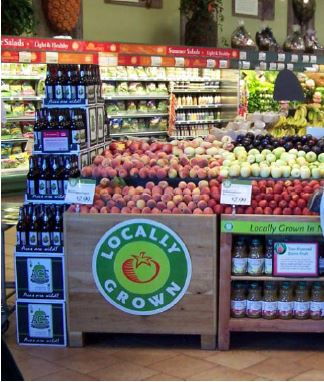
The products on a farm must be sorted and sold to the optimum markets. Premium products are sold to high-end restaurants; great products to farmers markets, farm stands, natural food stores, and CSAs; good products to local small restaurants, schools and other institutions; and moderate, surplus and visually less appealing products are used in value-added products.
The uniqueness of the dominant gambling industry in Nevada must be recognized during market plans due to their large business and volume. The steps required to sell to chefs can vary depending on whether the restaurant is owned by a large casino or by smaller owners.
If it is owned by the casino then the sales go through one buyer for a large number of restaurants in the complex. This requires getting to know the chef and the buyer. There is a requirement for high levels of insurance, bonding, and marketing to a large buyer.
The restaurants owned individually are much easier to access, only requiring marketing directly to the chef(s), although getting the attention of chefs is a challenge.
Many Nevada producers have sold to some chefs in peak season. They have achieved the quality required by chefs but need to achieve a consistent supply. While chefs, who have limited time, may want to know the individual farmer’s production philosophy and systems, they prefer to talk to a knowledgeable representative for a group of farmers rather than each individual farmer. Studies have indicated the chefs’ preferences in Nevada (Curtis et.al, 2010; Cowee et.al, 2009; Curtis et.al, 2009).
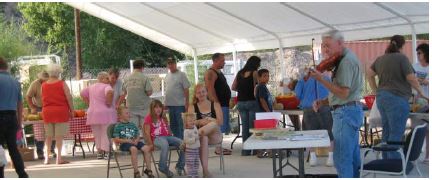
A common market for local food sales is in the farmers markets.
Producers have found that the prices in urban farmers markets are good but the time and travel can be very costly for their small volumes. UNCE research on consumers in Nevada farmers markets have provided information on how to sell to this market (Cowee et.al, 2009).
Most farms are too small to handle the costs of hiring marketing and sales professionals indentifying optimum markets and arranging shipping. They market and ship on their own. Some producers in the Reno area collaborate informally to move their products and sell to CSA businesses. Some producers in Lincoln County are working to establish a center where a manager will be hired to sell their products to markets with the best return.

It is important to communicate regularly with buyers regarding their needs in the products such as quality, taste, quantity, timing of delivery, certification, and safety and quality-control standards. This information must be fed back to all the producers and members in the chain of activities so that all systems work to address these needs effectively and efficiency.
Each farm must find the prime markets for their products, create a diverse lineup of markets and service these markets well. In Nevada the large demand and low supply makes it easier to market. Education for producers is required because marketing is new to many of them. In addition, the impact of long distances to some of the markets must be analyzed because it changes the cost structure and profit margins.
Distribution Gaps
Nevada lacks a local food distribution system. There is no distribution system for local food to be moved between farms and the markets in the state. Since there are no local food distributors, currently producers must identify their key markets and then transport and sell their products to those markets on their own. Individually transporting and selling products can be costly and time prohibitive due to long distances to market, insurance requirements, licensing costs, etc.
A transportation network in the state would be a distinct asset. There have been talks with current large food distribution companies to see if it is feasible for them to service local food growers in Nevada. One company has started working with farmers in the Reno area to provide some service in transportation and sales of products that fit their business.
Distribution systems must be designed to service the markets. Applicable systems to create and find optimum transportation to each market must be identified by evaluating current systems or creating systems applicable to Nevada.
It is clear that an efficient distribution system is required in each area of Nevada for local foods. It may be useful to consider regional food hub systems for Nevada. There are federal resources to help regional system development (Bartham et.al, 2012; Agricultural Marketing Service, 2012).
Quality Control Gaps
In every food system, it is essential to establish a quality and food safety control system from plant production through to product delivery. When creating a new Nevada local food market, a quality control and food safety system must be developed that is practical and affordable for the producer to implement. It should guide them to produce the consistently high-quality product demanded by the market. UNCE is outsourcing and training staff within to provide expertise and support in the area, and the Nevada Department of Agriculture is supporting and collaborating with this food safety education. There are no current resources in Nevada for education on food safety. This gap must be addressed to fulfill the requirements of all markets to provide safe food production, storage, processing and sales.
Business Gaps
Business planning, enterprise budgets, and cost analysis should be developed for the farm system as a whole, for each target product in desert environments. Costs of production are available for commercial production systems but are not available for ripe-from-the-field systems targeting premium markets in Nevada. It is also essential to train the farmers on how to establish business plans, accounting and record-keeping systems. Like any small business, there are tight margins and large potential for failure. A farm’s success will depend on establishing efficiencies, focusing on profitable enterprises and finding markets. Several agencies (UNCE, Rural Nevada Development Council, Nevada Center for Small Business Development, Nevada Grown, etc.) have worked together to provide Next Level, QuickBooks, enterprise budgets and marketing seminars across the state of Nevada. Individuals involved in small-scale farming generally have been known to be lacking in the business management area. Successful farmers tend to know their cost of production, marketing and returns. As more growers diversify their operations, training in these areas will need to continue, expand and be strongly reinforced.
Conclusions
The potential for a local food industry is strong in Nevada because there is demand and the ability to produce fresh local foods. The large distances food currently is being imported decreases food quality and creates risks in supply.
Producers in the state need information on how diversifying their farms to local food products would provide a sustainable living.
The gaps identified in local food production include post-harvest practices, processing, marketing, sales and systems. In all of these areas, systems must be established to maintain quality and food safety as well as develop solid business practices and monitoring. The gaps identified largely exist because the industry is very young. Reno, where local food systems have been building for 15 years, has a small but rapidly expanding industry that demonstrates local food production is feasible. The rest of Nevada is just starting to recognize there is an industry to build.
All areas in Nevada need to increase knowledge and infrastructure to grow and transport local food efficiently to retain quality and reduce costs for producers and consumers. Collaborations between UNCE and other agencies across the state must develop and implement plans to support a viable Nevada local food system.
REFERENCES
Agricultural Marketing Service, 2012. Farmers Markets and Local Food Marketing. Agricultural Marketing Service
Barham, J., D. Tropp, K. Enterline, J. Farbman, J. Fisk, and S. Kiraly.2012. Regional Food Hub Resource Guide. U.S. Dept. of Agriculture, Agricultural Marketing Service. Washington, DC. Regional Food Hub Resource Guide
Bishop, C., H. Gatzke, & K.R. Curtis. 2010. Small Farm Hoop House Production of Vegetables in Desert Climates Costs & Returns, 2010. UNCE Special Publication-10- 11.
Carlson, A & E. Frazão. 2012. Are Healthy Foods Really More Expensive? It Depends on How You Measure the Price. Economic Research Service. U.S. Department of Agriculture. May 2012. Are Healthy Foods Really More Expensive?
Cowee, M.W., K.R. Curtis, R. Morris and H. Gatzke. 2009. Buying Local: Perceptions of High-End Chefs in Nevada. UNCE Fact Sheet-09-41.
Cowee, M.W., K.R. Curtis and H. Gatzke. 2009. Nevada Farmers Market Customer Profiles. UNCE Fact Sheet-09-45.
Cowee, M.W., K.R. Curtis and H. Gatzke.2009. Why Customers Shop at Farmers’ Markets in Nevada. UNCE Fact Sheet-09-32.
Cowee, M.W., K.R. Curtis, and H. Gatzke. 2009. Marketing to Farmers’ Markets: Ideas for Market Vendors & Managers in Nevada. UNCE Special Publication-09-10. 14 pages.
Curtis, K.R., M.W. Cowee, M. Velcherean, and H. Gatzke. 2010. “Farmer’s Market Consumers: Is Local or Organic Important?” Journal of Food Distribution Research. 41(1): 24-27.
Curtis, K.R., J. Entsminger, H. Gatzke and R. Morris. 2009. Developing Farmer and Gourmet Chef Partnerships. UNCE Fact Sheet-09-40.
Dreaming New Mexico. 2012. Food & Farming
Economic Research Service, United States Department of Agriculture 2010. Local Food Systems. Economic Research Report No. (ERR-97) 87 pp.
FamilyFarmed.org. 2012.Building Successful Food Hubs. A Business Planning Guide for Aggregating and Processing Local Food in Illinois. Illinois Department of Commerce and Economic Opportunity. University of Illinois Business Innovation Services. Illinois Department of Agriculture. A Business Planning Guide for Aggregating and Processing Local Food in Illinois
Gatzke, H., 2012. Hoop House Production in the Desert. University of Nevada Cooperative Extension Special Publication 12-00.
Gayot, 2012 Top 40 Restaurants in the U.S. The Restaurant Issue. Top 40 Restaurants in the U.S. 2016
Harris, T. 2011. Input-Output Model, State of Nevada (IMPLAN). University Center for Economic Development, University of Nevada.
Las Vegas Convention and Visitors Authority. 2012. LAS VEGAS CONVENTION AND VISITORS AUTHORITY
Martinez, S., M. Hand, M. DaPra, S. Pollack, K. Ralston, T. Smith, S. Vogel, S. Clark, L. Lohr, S. Low and C. Newman. 2010. Local Food Systems: Concepts, Impacts, and issues. Economic Research Service, U.S. Department of agriculture. Local Food Systems: Concepts, Impacts, and issues
McNally, G. 2011. Mid-Tier Chain Enterprises. Overview and Underwriting. Financing Healthy Food Options: Implementation Handbook. Capacity Building Initiative. CDFI Fund. Financing Healthy Food Options: Implementation Handbook
Nevada Grown. 2012. Resource for Nevada’s Rich Selection of Locally Grown Food. Farmers Markets
Slama, J. 2012. A Farmer’s Guide to Selling, Postharvest Handling and Packing Produce. FamilyFarmed.org. Farmer’s Guide to Selling
USDA. 2010. Slaughter Establishment Availability– Maps. United States Department of Agriculture. Food and Safety Service. Slaughter Establishment Availability
Gatzke, H.
2012,
Developing a Local Food Industry in Nevada,
University of Nevada Cooperative Extension


